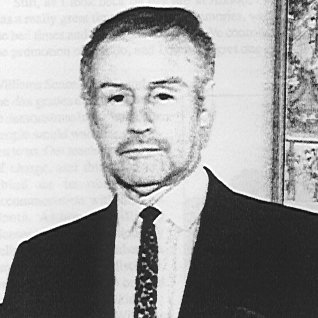Recollections of the Early Days of Aikido in Great Britain
By Henry Ellis - Ellis Aikido School

In 1957, I was studying Judo and Karate at the Abbe School of Budo at hte "Hut" in Hillingdon, Middlesex, a suburb of London. My teacherwas Ken Williams Sensei, and we were all students of Kenshiro Abbe Sensei (8th dan in Judo, 6th dan in Aikido, and 5th dan in Karate and Kendo). At that time, very few people in the United Kingdom had heard of Aikido.
Around 1957, Abbe Sensei told Mr Williams that he had recieved a letter from O-Sensei saying that instuctors outside of Japan had permission to teach Aikido to anyone who wished to learn it. Mr Williams was Abbe Sensei's first Aikido student. Eventually, Abbe Sensei made Mr Williams National Coach for Aikido, and I became Mr Williams assistant - which I remained for approximately 15 years.
Abbe Sensei's Aikido was the prewar style of Aiki-Jutsu, which was very physical. Both Abbe Sensei and Williams Sensei were excellent teachers, who worked very hard to train us while promoting Aikido to an initially unreceptive public.
Abbe Sensei and Williams brought eight of us up to 1st dan. At the time, we were the only dan grades in Great Britain, and we were all in one dojo.
Sunday morning practice was for dan grades only. Williams Sensei would lock the doors to the dojo, and the real serious practice would start. Williams Sensei would allow the younger dan grades to try and prove themselves against him, but they had no success.
Williams Sensei started to visit other dojos and to introduce Aikido. He was a highly respected Judo teacher, and this helped him to arrange visits to Judo clubs. Occasionally, a Judo instructor would afew students to practice Aikido in a corner of the mat.
In the early days, the training was extremely difficult with the emphasis on very strenuous exercise. My students and I used to train four or five nights a week as well as Sunday mornings. After running for several miles, we would return to the mat and perform 200 push-ups on the backs of our wrists, which we then followed with general practice and a further two hour of hard practice.
When I was graded 1st dan by Abbe Sensei, Williams Sensei instructed me to take a good student as an assistant. I chose a young man of 17 years of age by the name of Derek , who is now 3rd dan and Technical Director or our Basingstoke Headquarters. Mr Eastman is still a loyal friend after all these years.
When Mr Eastman reached 1st dan and I was 2nd dan, William Sensei advised us to travel and spread the word of Aikido. Both Mr Eastman and I gave up our jobs and travelled around the United Kingdom. It was very difficult to introduce Aikido, because most people had never heard of it.
Mr Eastman and I left home and headed for the Midlands without much money or hope. We would visit Judo and Katate clubs, sports centers, etc. In some areas, where Williams sensei had already introduced Aikido, we would find accommodation with the students, and we would get paid a small fee for teaching. Where there was no Aikido at all, we would take jobs for afew days to feed ourselves. In one area, we worked as assistants to a funeral director. We had to goto the morgue, collect the bodies. And take them upto the chapel. (Once the boss caught me in the chapel of rest with a young local maiden whom I was laying to rest - one who was alive and well. He was very angry.)
We also worked as road sweepers, wearing bowler hats which attracted a great deal of attention from the girls.
In the north of England, the girls loved to hear the London or southern accent, and this was a great help with invitations for dinner. But it was still a struggle to survive.
We also worked in steel factories and had many other jobs around the country. Without a doubt, the worst was repairing an old railway line. We called it the "railway of death." Needless to say, we did not stay on that job very long.